Symposium
26th-27th May 2022, Venice
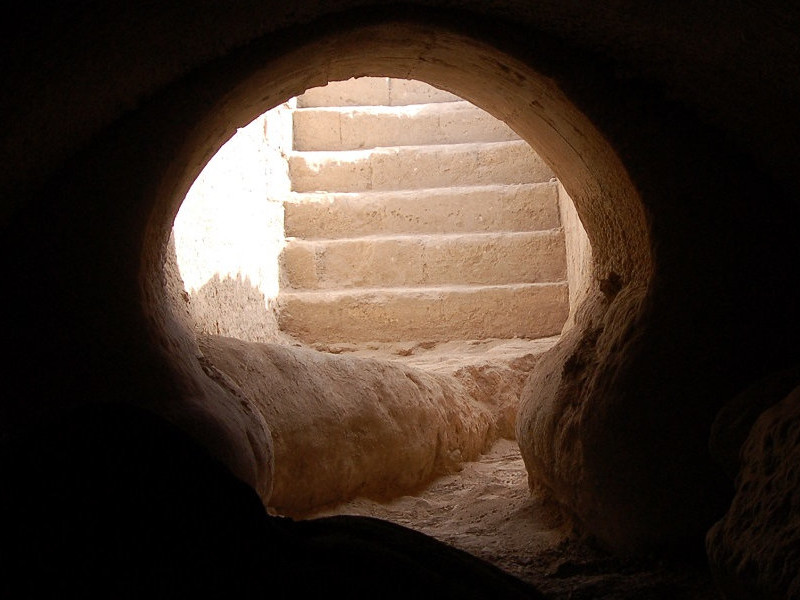
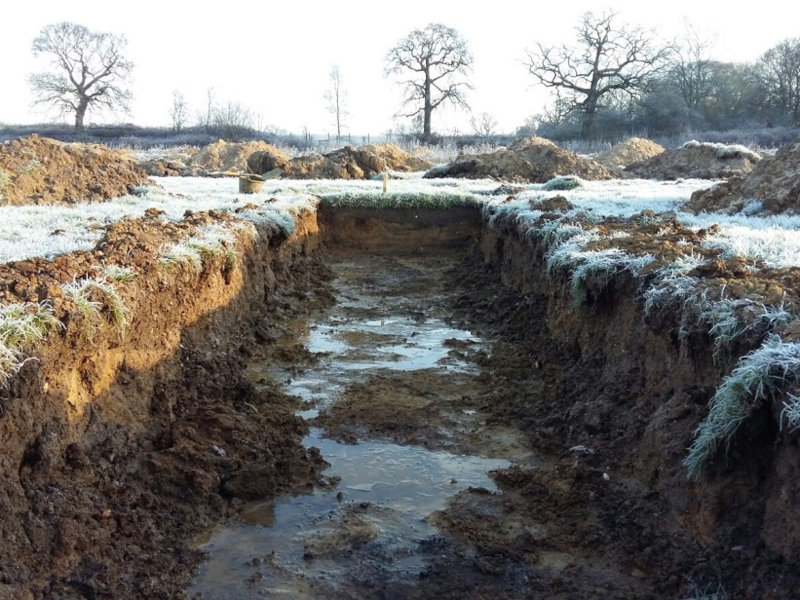
Aim
“How do we find (and live with) the meanings of the past?” is a two-days symposium on archaeological thought's ways to generate meaning out of the material data collected via excavations, surveys, analyses.
This symposium addresses the methods through which archaeology envisages those data as signs of ancient identities and explores how we live today with the arising meanings of the past.
Often referred to as a discipline of “things” – i.e. materiality of things, objects making history, comfort of things – this symposium will deal with archaeology as a discipline of traces left by ancient communities’ practices.
When focusing on reconstructing practice, archaeology brings out a crucial cognitive element that, if investigated in all its relational potential – with semiotic awareness – allows us to “understand social groups and cultures that did not have an opportunity to write their own histories” (E. Said 1978, 12-14): this is the kind of identity the symposium aims at defining.
Indeed, if the static “leftovers” of past practices are given the epistemological dignity of sign of something else, they can be investigated as dynamic hints of neglected histories, social structures, human choices, resistance, adaptation.
Background
Organised at the Department of Humanities of Ca' Foscari University of Venice in the context of the Marie Curie Research Project IDENTIS, with the scientific collaboration of the Centro Internazionale Scienze Semiotiche "Umberto Eco" [ITA], the symposium explores identity interdisciplinarily, by intertwining semiotics and archaeology, while seeking an impact from anthropology, sociology, arts, music, architecture.
In order to contribute positively to a fresh debate on identity, the scholars and professionals in dialogue with each other at the symposium will focus on the relationship with otherness as the defining moment of identity. Such instant charges human decisions with meaning, highlighting their implications in terms of responsibility of both communities in the past and scholars in the present towards others and history.

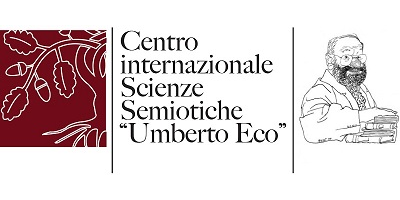
Structure
The symposium invites speakers from different geographic, academic, and professional corners of the world to Venice in May 2022 to focus on the ways which, through archaeology, semiotics, anthropology, arts, music, architecture, they aspire to:
- reconstruct the social meaning of past actions and material culture;
- retrieve traditional and new types of data while communicating them in different forms broader public;
- reconstruct the politics of the past via concepts of memory, space, identity;
- retrieve what is overlooked at by the dominant narratives, in order to both construct a history of subalterns and address the ethical implications of interpretative frameworks.
These topics, developed by the scientific committee composed by Mauro Puddu (Marie-Curie Fellow at Ca’ Foscari), Gianfranco Marrone (Director of Centro Internazionale Scienze Semiotiche "Umberto" Eco Urbino and Professor of Semiotics at University of Palermo), Dario Mangano (Professor of Semiotics at University of Palermo) and Tiziana Migliore (Associate Professor of Philosophy and Theory of Languages at University of Urbino) will constitute the four sections, running over two days, in which the symposium will be structured.
Moreover the symposium will host an exhibition of the works by Rita Pedro Goncalves Casimiro da Costa: Illustrator, comics artist, archaeologist at Pre-Construct Archaeology London (PCA)

Living with the past
Identity and human meaning through politics, colonization, heritage
- Practices and the politics of boundaries: identity in action in ancient and modern Britain
Andrew Gardner, UCL Institute of Archaeology - Signifying Environmental Harm: Toxic Heritage and the Anthropocene
Elizabeth Kryder-Reid, IU School of Liberal Arts, IUPUI - Reconstructing Palestinian identity, memory and space: preliminary thoughts and ideas
Mahmoud Hawari, Bethlehem University - Personal collection – Universal Connections: Identity and creation of meaning at the Museum of Broken Relationships
Olinka Vistica, Museum of Broken Relationships, Zagreb
Signs of identity
Interpreting and translating the sands of time
- Semioidentity: Archaeological Perspectives
Robert W. Preucel, Brown University - Neolithic traces of spatial privatization and property
Manar Hammad, Université Sorbonne Nouvell Paris III - Shaping the identity of the Urbino International Center of Semiotics. Its Archive through the lens of the Foucauldian dispositive of "table" (tableau)
Tiziana Migliore, Carlo Bo University of Urbino, CiSS - Translating Arslantepe
Marcella Frangipane, Accademia dei Lincei, and Dario Mangano, University of Palermo
When is identity
Embodying and overcoming the materiality of bones, faces, voices
- Tracing identity: the semeiotics of the biological profile
Zoë Crossland, Columbia University, NYC - Notes for a forensic semiotics. Aesthetics and ontologies of forensic archaeology and their influence on processes of memory-making
Francesco Mazzucchelli, University of Bologna - From Skulls to Numbers: Measuring, Calculus, and Meaning of the Face from Early Modern Dissections to AI Reconstructions
Massimo Leone, University of Turin; Shanghai University; Cambridge Digital Humanities; Bruno Kessler Foundation - Decolonising silenced music and musicians
Marilena Delli Umuhoza, Ian Brennan
Mending subaltern identities and identifications
of crops, memory, symbols, and bodies at work
- Of Figs and Pomegranates: Exploring Subalternity in the Ancient Mediterranean
Peter van Dommelen, Brown University - Nuraghi and the knots of Sardinians’ identification
Franciscu Sedda, University of Cagliari - Politics of the Underground
Dima Srouji, Royal College of Arts London - The Body of the Archaeologist: Exposing A Long-Overlooked Semiotic Interpretant
Mauro Puddu, Ca’ Foscari University of Venice
Contributors
Andrew Gardner
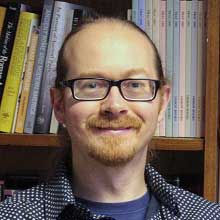
Andrew Gardner
Senior Lecturer in the Archaeology of the Roman Empire in the Institute of Archaeology, UCL London
Abstract
Practices and the politics of boundaries: identity in action in ancient and modern Britain
In this paper, I use examples from the Roman past and the Brexit present of the UK to discuss the links between practices, identities, and the changing dimensions of imperial power. In both the traditional archaeological context of later Roman Britain, and in excavating the roots of Brexit in post-War British politics, analysis of the practical semiotics of identity is the most fruitful way to understand the social processes underway. In each context, the meaning of different practices, articulated through the concepts of identities and boundaries, is crucial to the structuration of, respectively, a late imperial and a post-imperial society. The tensions between imperial and local identities are manifest across a wide suite of practices, the investigation of which provides a dynamic method for understanding how these tensions play out, with consequences for the fragmentation of the Roman Empire, on the one hand, and of the UK, on the other.
Biography
Andrew Gardner is Senior Lecturer in the Archaeology of the Roman Empire in the Institute of Archaeology, UCL. Andrew took all of his degrees at the Institute, from 1992-2001, with a year out working in commercial archaeology (and a record store!) in 1995-6. Following completion of his doctorate, Andrew worked in various capacities at the Institute until 2003, when he took up two part-time posts simultaneously, teaching at the University of Leicester and co-ordinating archaeology programmes at the School of Continuing Education at Reading University. Then, in 2004-5, Andrew was a Lecturer in Roman Archaeology at Cardiff University, on a fixed-term contract, after which he joined UCL. Andrew has published widely on Roman archaeology and archaeological theory, and excavated at sites all over the UK. Most recently, he co-directed excavations in the Roman legionary fortress at Caerleon, with Dr Peter Guest of Cardiff University. Having taught extensively in adult education earlier in his career, and been involved in a range of public engagement activities at Caerleon, Andrew is passionate about the communication of archaeology to different audiences, and was recently elected co-Chair of University Archaeology UK, the national subject committee for academic archaeology.
Elizabeth Kryder Reid
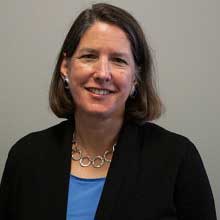
Elizabeth Kryder Reid
Chancellor's Professor of Anthropology and Museum Studies, Adjunct Professor of History, Director of Cultural Heritage Center, Indiana University, Indianapolis (IUPUI); Fullbright Research Scholar at CY Cergy Paris Université
Abstract
Signifying Environmental Harm: Toxic Heritage and the Anthropocene
As every discipline is reckoning with the Anthropocene, particularly the environmental and climate legacies of human actions since the Industrial Revolution, what does archaeology have to offer and how can a semiotic lens figure in that endeavor? Industrial archaeology is a well-established subfield and post-industrialization has become a rich interdisciplinary field of inquiry. One avenue into the study of post-industrial sites in the context of the Anthropocene is how those which have been transformed into heritage sites (i.e. intentional managed for preservation and interpretation purposes) address aspects of environmental harm. Specifically, how do post-industrial sites and other sites of environmental damage, figure as arenas of memory and identity? This paper draws on research of the interpretive narratives (Eg. exhibit labels, outdoor signage) and the object theater at post-industrial in the US, UK, and EU to explore how materiality and narratives signify key constructs in the archaeology of environmental harm. As material semiotic scholars such as Haraway (2016) and Burch (2021) have noted, the complexity of the Anthropocene’s environmental crises requires responses that go beyond representational readings. They demand framings that are collective, address responsibility, and transcend the ontologies of human exceptionalism. They also require exploration of the political fields of power in which the sites operated historically and the heterogeneous, often discordant meanings in their contemporary contexts. The public interpretation and memory practices of post-industrial heritage sites, particularly those implicated in the history of extractive capitalism, offers an opportunity to assess the place of archaeology and cultural heritage sites in the critical response to our collective environmental and climate crisis
Biography
Elizabeth Kryder-Reid (Ph.D Brown University) is Professor of Anthropology and Museum Studies in the IU School of Liberal Arts at IUPUI, Director of the Cultural Heritage Research Center, and the former Director of the IUPUI Museum Studies Program. With a background in archaeology, art history, and public history, her research investigates cultural heritage with a particular focus on the intersections of landscape and power and the contestation of social inequalities across gender, race, class, ethnicity, and religion. She is the author of “California Mission Landscapes: Race, Memory, and the Politics of Heritage” (2016), a contributing author to Interpreting Religion (2018) and Keywords in American Landscape Design (2010), and PI of Shaping Outcomes.
Mahmoud Hawari
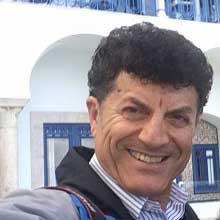
Mahmoud Hawari
Senior Lecturer of Archaeology, Bethlehem University; Former Director General, the Palestinian Museum, Birzeit, Palestine
Abstract
Reconstructing Palestinian identity, memory and space: preliminary thoughts and ideas
As a field archaeologist and an academic, I have always been interested in how to interpret archaeological finds and material data as clues for identity and cultural heritage of communities transcending ethnicity, religion, and space-time. I have also been concerned with the relationship between archaeology and politics, especially nationalism. For long now archaeologists have been applying the notions of cultural continuity and change, human agency, power and materiality to trace the evolutionary trajectories of societies. In recent decades, archaeological semiotics has emerged as a method to give meaning to the past in the present through the study of materiality. Drawing upon the above methodologies, I will compile in my talk a collection of preliminary thoughts and ideas provoked by challenging the ongoing settler colonialism in Palestine, and the attempts of erasure of the Palestinians as a subaltern and indigenous people. I will explore alternative means on how to reconstruct Palestinian identity, memory and space beyond the dominant narratives, and by linking the past with the present. Inspired by cognitive and semiotic awareness, I will investigate and interpret various aspects of Palestinian material culture, such as pottery, traditional crafts, domestic architecture, and intangible cultural heritage, such as embroidery, language/ dialect, folk stories.
Biography
Mahmoud Hawari teaches at Bethlehem University in Palestine. He is a former Director General of the Palestinian Museum in Birzeit, Palestine. He was Lead Curator at the British Museum in London, and a Senior Research Associate at the University of Oxford. His primary research interests are in archaeology, Islamic art and architecture, and the cultural heritage of Palestine. He taught archaeology at the Palestinian universities of Birzeit, al-Quds, as well as at the University of Oxford. He directed, consulted and participated in numerous international archaeological projects. He obtained his MA and PhD degrees from the University of London. He has widely published in his field of specialisation.
Olinka Vištica
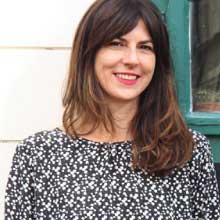
Olinka Vištica
Film Producer, Director at Musuem of Broken Relationships, Zagreb
Abstract
Personal collection – Universal Connections
Identity and creation of meaning at the Museum of Broken Relationships
At a time when the world’s biggest encyclopaedia is created by “every man”, in an era when seemingly much of our private lives are conducted in the public eye, the Museum of Broken Relationships introduced love and relationships life into the museum world. The museum exposes publicly its aleatory collection composed of anonymous contributions by the audience. Museum exhibits, banal trinkets accompanied by subjective narratives of their former owners, all symbolise the end of a relationship. Functioning as triggers of memory they launch an emotional process of meaning construction among the museum contributors, curators and visitors alike.
In my paper, I will demonstrate how this meaning is created not only through our curatorial practices and visitors’ responses, but also through the constant shifting of identity between the contributor/storyteller and the visitor/ observer. I hope to make a case for an underlying universal, human meaning of our highly personal collection that connects us in the matters of love and loss, across growing divides of class, community, and culture that seem to define our world. The Museum of Broken Relationships is an example of a contemporary contact zone that preserves individual stories from sinking into general societal processes thanks to a semiotic act that resembles a performative act. It is a place where the creation of meanings of the past becomes a celebration of those moments when we truly meet one another, which often adds unexpected cathartic rituals and bereavement support to visitors’ experience.
Biography
Olinka Vištica, founder and director of the Museum of Broken Relationships was born in Split on the shores of Croatia. She has been curating and developing this original project (with co-founder Dražen Grubišić) from its conception as an art installation (2006) to its foundation as a brick and mortar museum now based in Zagreb, Croatia. Along the way, she has produced and organised more than fifty exhibitions of this “touring museum” around the world. With interests that stem from the world of cinema, Olinka has directed numerous cultural initiatives, from international film festivals (World Festival of Animated films ANIMAFEST ZAGREB, Motovun Film Festival) and she is still producing films in the framework of her production company Hulahop. She holds a BA in English and French language and literature from the University of Zagreb. In 2017 she has published the book Museum of Broken Relationships - Modern Love in 203 Everyday Objects (Grand Central Publishing, 2017) that has been translated to five world languages.
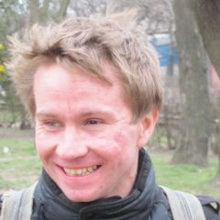
Dmytro Kyosak - discussant
Robert W. Preucel
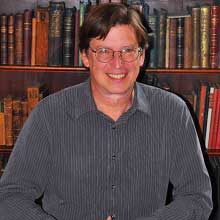
Robert W. Preucel
James Manning Professor of Anthropology, Director of Haffenreffer Museum, Brown University, Joukowsky Institute of Archaeology
Abstract
Semioidentity: Archaeological Perspectives
The archaeology of identity typically focuses on questions about individual choices and actions. A semiotic approach to identity considers both agency and structure- to reflect upon the self from the point of view of intentions, desires, and goals in a particular social context as well as to consider how identity invokes tacit knowledge of life chances linked to received status regimes. In addition, identity has both conscious and unconscious dimensions and this duality accounts for its dynamism since specific aspects of identity can be activated for particular purposes. Signs of identity are fluid and ever-changing. The challenge for archaeologists is explore what counts as a sign within a particular cultural context and to interrogate for whom and under what circumstances the sign-identity relationship holds.
Biography
Robert Preucel is James Manning Professor of Anthropology and Director of the Haffenreffer Museum of Anthropology at Brown University. He received his doctorate in archaeology from UCLA in 1988. He was the 6th Annual CAI Visiting Scholar at SIU Carbondale in 1989 and organized a conference on the Processual/Postprocessual debate. In 1990, he took an Assistant Professor position in the Department of Anthropology at Harvard University. In 1995, he joined the University of Pennsylvania as an Associate Professor. He was appointed the Sally and Alvin V. Shoemaker Professor of Anthropology in 2009 and served as Chair of the Department (2009-2012) and Gregory Annenberg Weingarten Curator-in-charge of the American Section at University of Pennsylvania Museum of Anthropology and Archaeology (2010-2012). He is a specialist in archaeological theory and practice. His fieldwork projects include the archaeology of a utopian community in Massachusetts (the Brook Farm Project) and the collaborative study of a post Pueblo Revolt ancestral Cochiti Pueblo community in New Mexico (the Kotyiti Research Project).
Manar Hammad
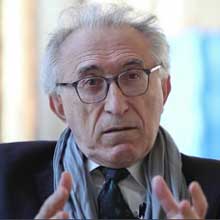
Manar Hammad
Emeritus Professor in Semiotics, Université Sorbonne Nouvell Paris III
Abstract
Neolithic traces of spatial privatization and property
Sedentarism is inferred, for the neolithic age, from the presence of grouped durable constructions, identified as villages, where traces of activities and food preparation in buildings invite to identify houses and community buildings. The changing morphology of such structures testify for various means of control of physical access and visual access of people into built spaces, what can be interpreted as morphologies of privatization: the patterns of circulation of people in space are invested with meanings such a, both private and public, passage.
These facts are recognizable in 11th to 9th millennium BC sites. We must wait two more millennia before the appearance of sealing that testifies for the existence of private property characterizing movable objects. Certitude about private property of immovable spaces appears with writing, when tablets account for the circulation of properties between people, like the controlled circulation of segments of physical space within social space.
In this paper, we propose to investigate semantic dynamic interactions between physical space and social space, as can be inferred from archaeological remains.
Biography
Manar Hammad is a research professor of semiotics with a profound interest in archaeologies witnessed by his archaeological activity in Palmira and by numerous publications on the subject. He was co-director of a DEAA program in architectural theory at the National School of Architecture of Paris-La Villette (ENSAPLV). At the University of Montreal and the University of Quebec in Montreal, he taught communication theory and the analysis of non-verbal communication. At the Higher School of Interpreters and Translators (University of Paris III), he taught French-Arabic and English-Arabic technical translation. Research Director of Groupe 107 (Paris) from 1972 to 1976, he conducted research in the anthropology of architecture. He researched in the framework of the Semio-Linguistic Research Group directed by Algirdas Julien Greimas at the practical school for advanced studies in social sciences in Paris. He organized several international scientific meetings focused in the semiotics of space. As a member of the Asian Society, he has focused his research for several years on Semitic civilizations and their sacred and institutional spaces. In particular, he devoted twelve years to the study of Palmyra, where he directed excavations. He is founder of Dar Hammad, a research center located in Aleppo, Syria, entrusted to the French Institute of the Near East (IFPO), dedicated to scientific research on northern Syria, while promoting cultural exchanges with Syrian researchers and intellectuals. In 2017, L’Academie d’Architecture awarded him the Medal of Archaeology. He is author of numerous monographs such as Sémiotiser l'espace: Décrypter architecture et archéologie. Essais sémiotiques, (Paris, Geuthner 2015), and Leggere lo spazio, comprendere l'architettura (Meltemi, 2003).
Tiziana Migliore
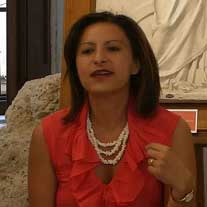
Tiziana Migliore
Associate Professor of Philosophy and Theory of Languages, Università di Urbino, Centro Internazionale Studi Semiotici Urbino
Abstract
Shaping the identity of the Urbino International Center of Semiotics.
Its Archive through the lens of the Foucauldian dispositive of "table" (tableau)
The Archive of the Urbino International Center of Semiotics (CiSS) is a work in progress system that consists of heterogeneous documents – manuscript, typewritten and digital books and papers (letters, projects, programmes, invitations lists, financial plans, financial reports, publications), the classifier of Algirdas Julien Greimas and other classifiers, postcards, flyers, posters, drawings, photographs, vinyl albums and music cassettes, newspaper clippings, furnitures, analog and digital audio and video recordings on different medias – concerning the activities carried out by the former generation of semiologists from 1969 to date. Thanks to the initiative of Carlo Bo, Giuseppe Paioni and Paolo Fabbri, the University of Urbino gave life to the world's first International Center for Semiotic Studies, which had seen the active presence of the most important intellectuals in social and natural sciences of the second half of the twentieth century. This Center, during its summer seminars and conferences, became a "phalansterio" of discussion (Louis Marin), a forge of ideas and friendship where scholars dialogue with their colleagues and young levers. Is it possible to shape the identity of such an exceptional place of exchange and, if so, how?
Actually the Archive has not yet found the way to be visible and enunciable. Its materials are partly inscribed in a chronological and unbroken linearity, partly accumulated in an amorphous mass. In search for a right method that causes this passive multiplicity to emerge as meaningful practices, i.e. discursive formations grouped together in series according to specific boundaries and regularities, we ran into the concept of "table" formulated by Michel Foucault (1969). Workers in the historical field have to distinguish various sedimentary strata and it seems to us that the "table" (tableau), as a term that the philosopher borrows from the domain of art and use to explain the constitution of "a series of series" in "a vertical system", could be an effective strategic choice to describe and organize the Archive. Indeed, the visual, comparative and logic functioning of the "table" can help to discover analogies and differences between the current practices and those that are embodied in the objects of the past, thus disclosing the Center's identity as a family of overlaid transformations.
We will come back to the Foucauldian conception and try to see what types of archaelogical series (modes of connexion over various successions: continuity, dominance, circular causality, exclusion, derivation, univocal determination, reactivation, presupposition...) the dispositive of table activates in the density of some of the documents from Urbino.
Biography
Tiziana Migliore is associate professor of Semiotics at the University of Urbino "Carlo Bo" and scientific secretary of the International Center for Semiotic Sciences "Umberto Eco" which is based in Urbino. Vice-president of the International Association of Visual Semiotics (AISV-IAVS), she has published the monographs Miroglifici (2011), Venice Biennale (2012), Senses of the visible (2018) and more than eighty Italian and international scientific articles (English, French, Spanish, Russian, Lithuanian). Among the collective volumes that she has edited are: Argomentare il visibile (2008), Retorica del visibile. Strategie dell’immagine tra significazione e comunicazione (2011), The Architecture of Babel. Creation, Extinctions and Intercessions in the Languages of the Global World (with P. Fabbri, 2011), Saussure e I suoi segni (2014), La Competenza esperta. Tipologie e trasmissione (with G. Marrone, 2021), Images of Europe. The Union between Federation and Separation (with F. Mangiapane, 2021). She writes for Il Manifesto and La Repubblica.
Marcella Frangipane and Dario Mangano
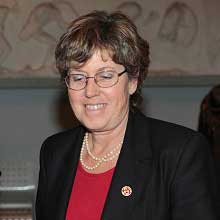
Marcella Frangipane
Full Professor of Prehistory, Accademia Nazionale dei Lincei
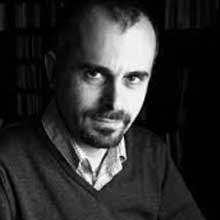
Dario Mangano Full Professor of Semiotics, Università Studi Palermo, Centro Internazionale Studi Semiotici Urbino
Abstract
Translating Arslantepe
When, in 2004 and 2009, Marcella Frangipane, director of the Italian Archaeological Mission in Eastern Anatolia of the University of Rome "La Sapienza" and in particular of the excavation of Arslantepe, faced the problem of presenting to the general public the results obtained in 50 years of work with an exhibition and the musealization of the site, respectively, a semiologist was asked to join the project team. The problem that everyone had was to communicate properly, conveying in the best possible way the information that the excavation had provided. It was necessary to tell a story that, besides being fascinating, promised to have a considerable impact on the common imaginary because it forced to question - and rethink - the processes through which human beings had passed from egalitarian societies to the hierarchical and complex ones in which most of the peoples of the Earth live today. The idea behind these projects was to communicate information and knowledge that was meaningful to everyone, not only to specialists in the field, and that the semiologist could contribute to transmitting it in the best possible way, translating the findings of the archaeologists into a simpler and more appealing language.
But translation, as we know, is a complex and unpredictable process that has nothing of the mathematical exactness of an equivalence. In passing from one system of signs to another, from the traces that researchers study by digging, to the words and images that must make them comprehensible to non-specialists, not only something is inevitably lost, but something is gained. By translating, one ends up reflecting not only on what is said, but also on the functioning - often implicit and irrelevant - of the languages among which it is done: on the one hand, that with which the finds "speak" of the past to the archaeologist, and on the other, that with which those contents are communicated. Thus, in the field, it turns out that archaeology and semiotics are linked by more than just a common interest in signs. A theory of signification such as semiotics, which is interested in contemporary communicative processes, and a discipline such as archaeology, which aims at reconstructing the past, basically do the same thing: they put sense in the condition of meaning. In other words, they are not concerned with determining the meaning of this or that sign, but with reconstructing, in the most complete way possible, the conditions under which an ancient building or an advertisement are testimonies of the culture that created them. And they signify it.
Thus, many years after that collaboration, that archaeologist and that semiotician talk about their experiences and about the possibilities that archaeology and semiotics have to meet, not only to communicate what is discovered, but also to rethink two disciplines that have much to say to each other.
Biography:
Marcella Frangipane is Full Professor of Prehistory and has taught Prehistory and Protohistory of the Near and Middle East and Strategies and Methods of Archaeological Research at the Sapienza University of Rome for undergraduate, master and PhD degrees. She is corresponding member of the Accademia Nazionale dei Lincei, International Member of the National Academy of Sciences (USA), and corresponding Fellow of the British Academy. She is also corresponding member of the Deutsches Archäologische Institut in Berlin and the Archaeological Institute of America. She is the author of more than 170 publications in international journals and volumes, among which 4 books. She is the Editor of the monograph Series Arslantepe, where the final results of the excavations at the site are published. She has participated in field research in Mexico, Italy, Egypt and Turkey. The Arslantepe Project (started in 1976) is the core of her research activity and the main inspiration of her research interests for themes such as the rise and early developments of hierarchical and unequal societies, the rise of centralised economies, bureaucracy, and the State in the ancient Near East, with particular reference to Mesopotamian and Anatolian environments. For her research at Arslantepe, Prof. Frangipane has received the Discovery Award by the Shanghai Archaeology Forum (China 2015); the Vittorio De Sica Prize for Science (Archaeology) (Italy 2015); and Rotondi Prize to Art Saviors (Italy 2017). She has also received the honorary PhD by the University of Malatya (Turkey) and the titles of Cavaliere Ufficiale dell’Ordine al Merito della Repubblica Italiana and Cavaliere dell’Ordine della Stella della Solidarietà by the President of the Italian Republic.
Dario Mangano is full professor of Semiotics at the University of Palermo. He also teaches at the University of Scienze Gastronomiche, Pollenzo, where he holds a laboratory in Food Advertimsent. He holds a PhD in industrial design, figurative and applied arts. He has extensively researched around the semiotics of objects, dedicating his interpretive efforts particularly to the problems of interface, instructions, and use. He is author of several monographs, among which Archeologia del contemporaneo (2010), Semiotica e design (2008), and articles like Cassate, Cannoli e Altri Miti (2020), This Is Not Vivian. The Photographer as a Form of Life (2019).
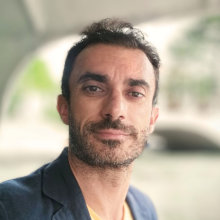
Mauro Puddu - discussant
Zoë Crossland
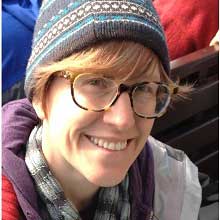
Zoë Crossland
Associate Professor of Anthropology, Director of the Center for Archaeology, Columbia University, Department of Anthropology
Abstract
Tracing identity: the semeiotics of the biological profile.
This presentation explores what a semeiotic perspective might offer toward understanding how claims about identity are made and reaffirmed as part of the work of constructing a biological profile from human osteological remains. How might a more fluid and unsettled understanding of the trace help us reconceptualize the broader impulses at play in classifying and describing human remains? I argue that a semeiotic approach opens or affords different possibilities for analysis and representation of the dead, that enable us to find more productive ways to express identity. This is both to recognize the importance of different dimensions of identity to the living, while not reifying and fixing such identities in the traces of the skeleton in ways that make them seem permanent or immutable.
Biography
Zoë Crossland is Professor of Anthropology at Columbia University. Her research deals with the historical archaeology of Madagascar, and with evidential practices around human remains. Her approach to historical inquiry is informed by Peircean "semeiotics," which she uses to explore the imbrication of the material and the immaterial, the human and the nonhuman. In her work on forensic evidence and the archaeological production of the dead body, Crossland considers the work of inference and practical activity by which archaeology conjures and evaluates competing claims about the past. She is presently working on a book, The Speaking Corpse, which teases out the different evidential relations through which the forensic corpse presents itself as witness. She does this by attending to the ways in which the evidence of the dead is explained and delineated for popular consumption by forensic anthropologists. zoe.crossland@columbia.edu
Massimo Leone
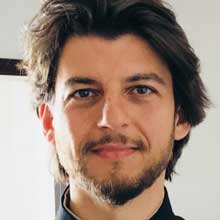
Massimo Leone
Full Professor of Semiotics, University of Turin, Department of Philosophy, Full Permanent Professor at Shanghai University
Abstract
From Skulls to Numbers:
Measuring, Calculus, and Meaning of the Face from Early Modern Dissections to AI Reconstructions.
Starting from the first early modern skull dissections, Andreas Vesalius’ De humani corporis fabrica (1543), the homonymous work by Adriaan van den Spiegel (1627), and especially after the publication of Petrus Camper’s Dissertation on the Real Differences in Facial Features of Men of Different Countries and Ages (1790), efforts to reduce the beauty of the face to a system of measurable proportions, and ultimately to a single figure — which Camper identified as the “facial angle” — multiplied. This diagrammatization of the face was inspired by the canon of Greek statuary, but it turned into the lodestar of the archeological survey of skulls from a remote past, of the ethnographic study of human faces and skulls from distant lands, and of their visual representation, with a proliferation of instruments invented to automate this process of standardization, from Paul Broca’s craniograph to the photographic grids and devices of Alphonse Bertillon and the first British ethnography. But the automated geometrization of the face in function of an ideal formula hid, as it is well known, the prejudices of the theory of races, and a racist concept of the evolution of the human species. The talk will wonder whether the idea of an ideal digitization of the face might still be at work in the ultimate results of this controversial quest, those that delegate to AI algorithms the automatic reading of faces, their typological grouping, and the production of “ideal faces” in digital arts, including those that propose 2D or 3D renderings of faces from the past.
Biography
Massimo Leone is Tenured Full Professor (“Professore Ordinario”) of Philosophy of Communication, Cultural Semiotics, and Visual Semiotics at the Department of Philosophy and Educational Sciences, University of Turin, Italy, Vice-Director for research at the same University, and part-time Professor of Semiotics in the Department of Chinese Language and Literature, University of Shanghai, China. He has been visiting professor at several universities in the five continents. He has single-authored twelve books, edited more than thirty collective volumes, and published more than five hundred articles in semiotics, religious studies, and visual studies. He is the chief editor of Lexia, the Semiotic Journal of the Center for Interdisciplinary Research on Communication, University of Torino, Italy (SCOPUS). He is the winner of a 2018 ERC Consolidator Grant, the most prestigious research grant in Europe.
Francesco Mazzucchelli
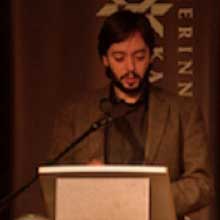
Francesco Mazzucchelli
Researcher in Semiotics, Università di Bologna
Abstract
Notes for a forensic semiotics. Aesthetics and ontologies of forensic archaeology and their influence on processes of memory-making
In the last years, forensic methods and procedures have been imported into archaeology and employed especially for the investigation of events of political violence, genocides, and political conflicts of the recent history. New analyses of war and genocide landscapes (e.g., Holocaust sites, mass graves and other locations in which political violence has occurred) have been conducted using new technologies (such as GPS scanning of the terrain), in order to “locate, record, analyse and (re-)present the above- and below-ground evidence” (Sturdy Colls 2016) visibly and invisibly contained in the landscape. All these new methods have enriched the field of conflict and genocide archaeology, and some have talked of a ‘forensic turn’, which is affecting the discipline (Dziuban 2017). One could say that this paradigm shift has turned the archaeological fieldwork into a crime-scene, to be investigated with the forensic techniques, but somehow the objects to which forensic archaeology directs its scrutiny are not different from those of traditional archaeology: physical remnants, material objects, ruined spatial structures, biological traces. What is different is the semiotic role that is ascribed to materiality, that becomes carrier of an “evidence of things” (Ian Hacking) and assumes a non-human agency. Moving from my experience of collaboration with forensic and conflict archaeologists (in particular during the participation to the international project Terrorscapes, coordinated by Rob van der Laarse) and from some considerations that I proposed in an essay in which I advocate for a confederation between forensic and semiotic approaches (Mazzucchelli 2017), in this paper I aim at exploring the possibilities of cross-fertilization between semiotics and forensic archaeology.
Through the discussion of some examples, I will focus especially on two levels of the possible re-reading of forensic archaeology’s categories through a semiotic gaze:
- 1. The redefinition of the notion of trace, that is more and more mediated by devices of processing and visualization of the ‘given’ and is the result of a different semiotic and ‘narrative’ role accorded to materiality as ‘non-human witness’ (A. Janus and R. Sendyka (2021) speaks of “non discursive archives”). This aspect will be framed through two opposite positions, here represented by, on the one hand, a reading of the “evidential paradigm” proposed by historian Carlo Ginzburg and, on the other hand, an essay by Paolo Fabbri in which he criticizes the ‘iconic paradigm’, proposing instead a method of trace-reading that mediates and translates different “sources of enunciation”.
- The language and aesthetics of forensic and the overlapping of different discursive domains (scientific, juridical, historical, artistic) and the practices of memorialization that this generates. This new focus on material evidence (and the new conception of materiality, and its semiotic role, that it entails) has also produced a “forensic aesthetics” (Keenan Weizman 2012) that affects the process of memorialization, calling for a re-thinking of the processes of memory-making and then the way in which the history of these sites (which plays a crucial role in the auto-representation of collective identities) is translated into the “discourse of collective memory”.
Biography
Francesco Mazzucchelli is Senior Assistant Professor at the University of Bologna, where he teaches Semiotics of Memory. He is the Director of Trame – Center for the Semiotic Study of Memory and is affiliated with the Center for the Studies of the Humanities ‘Umberto Eco’ at the University of Bologna. He is interested to the semiotic aspects of the materiality of memory and to the relation between memory and spatiality, with a specific focus on practices of urban memory rewriting and the mobilisation of cultural heritage. His most recent publication is the edited book (together with Gruia Badescu and Britt Baillie) Transforming Heritage in the Former Yugoslavia: Synchronous Pasts (Palgrave, 2021).
Marilena Delli Umuhoza and Ian Brennan
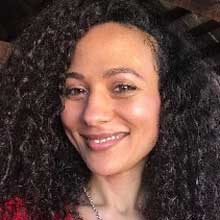
Marilena Delli Umuhoza
writer, music producer, radio presenter at Radio Radicale
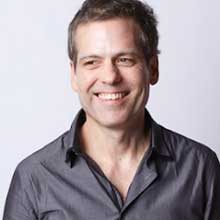
Ian Brennan Grammy's winner Music producers and writer
Abstract
Decolonising silenced music and musicians
This paper offers a comparative case study to archaeology bringing to the stage of this symposium on identity the discrepancy between the music industry and the worldwide music culture. It will demonstrate the absence of fair representation and democracy in the international POP culture, while highlighting the need for an important labour of cultural decolonization and deconstruction of mechanisms through which the music business ends up silencing the voices of a consistent slice of the entire world population. This is a system where technology, rather than allowing to distribute and share its power in an equitable and democratic way, embodies a centralizing function; and where the commercialization mass production end up by corrupting the arts and putting the entire culture of sharing at risk. The critique of such system, that puts the industrialized countries in the position to recolonize the world through mass media that endanger local cultures, is at the core of this talk because if we do not act this way, the idea of the public independently enjoying music will stay a sheer illusion. Given these premises, the talk will take us through the 13 years’ partnership of the two authors, that has produced so far the international publication of 37 albums in 25 different languages, recording musical voices that would have otherwise gone lost. The climax will be reached with screening of short movies and photos from some of the least musically visible world areas. This will illustrate the recording process in which Ian Brennan engages in full respect of the freedom of expression of the most diverse artists: mice sellers, prisoners, ostracized groups, and much more.
Biography
Marilena and Ian’s journey started from Rwanda, the country of Marilena's mother, to embrace 4 continents, allowing over 20 artists to leave their home country for the first time on tour. Their work provides a stage for artists otherwise unheard or censored. Like the women accused of witchcraft in Ghana, whose voices inspired the album WITCH CAMP GHANA; and the albino community of Ukerewe Island, part of a workshop that gave birth to the album TANZANIA ALBINISM COLLECTIVE that allowed to safeguard languages such as kikerewe and jeeta, dialects whose speakers are discouraged from speaking after the unification of the country in 1964. At the base of their projects is a work of recovery and preservation of idioms and musical languages at extinction risk. An example is the signed album "God is not a terrorist" by the last master of Surti, the Pakistani Ustad Saami, a precursor of ancient sacred music qawwali. Despite threats from Islamic fundamentalists, Ustad spent his life practicing this endangered art, handed down from generation to generation since the XXIII century.
Ian Brennan is a Grammy award-winning music producer, which for the past 10 years has worked on 37 albums by international artists (Tinariwen, Zomba Prison Project, Ramblin ’Jack Elliott) from four continents (Africa, Europe, Asia and the United States). Author of six books, he has held violence prevention seminars around the world since 1993 for prestigious organizations such as UC Berkley University, the University of London and New York's New School.
Marilena Delli Umuhoza, MA in Foreign Languages and Literatures for International Communication, has a background in cinema studies at UCLA. Daughter of a woman from Rwanda and a man from Bergamo, she has signed two books on racism in Italy and leads a radio program dedicated to Afro-descendant excellence on Radio Radicale. As a photographer and film-director, she has worked in partnership with her husband Ian Brennan to over 37 albums by artists from around the world, obtaining international recognition and awakening the attention of mass media on racism and diversity in the world of music and literature. Her works have been published in international newspapers and broadcasters such as the New York Times, The Guardian, Al Jazeera, CNN and BBC.
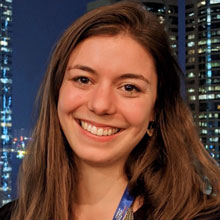
Thea Sommerschield - discussant
Franciscu Sedda
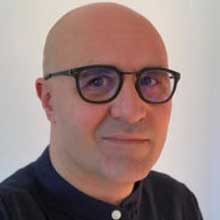
Franciscu Sedda
Associate Professor of Semiotics, Università di Cagliari, Lettere e Filosofia
Abstract
Nuraghi and the knots of Sardinians’ identification
The goal of our intervention is twofold. On the one hand, we will analyze the treatment of the so-called “Nuragic civilization” and its symbolic object, the Nuraghe, within a series of historiographical and political discourses over the course of the last few centuries. On the other hand, we will try to put these historical arguments over past and memory in correlation with the more general becoming of Sardinians' consciousness.
Beyond the contemporary (and ambiguous) vaunted pride of identity, the story of the social definition of the meaning of the nuraghes (and with them also that of the so called Giants of Mont'e Prama) appears other than peaceful and shared, revealing the texture of complex semiopolitical conflicts. The very definition of the collective that built the nuraghi through the name of the architectural object rather than with the ethnonym “Sardinians” testify this. A failure of self-denomination which conceals and at the same time reveals an unsolved knot of identification, both archaeological and political.
Biography
Franciscu Sedda is Associate Professor at the University of Cagliari, Department of Literature, Languages and Cultural Heritage. Here he teaches “Semiotics of Language and Languages”, “Semiotics of Contemporary Communication” and “Cultural Semiotics”. He has been visiting professor at Harvard University and Pontificia Universidade de São Paulo. He has occupied the position of vice-president in the Italian Association of Semiotic Studies (2007-2009) and since January 2017 is the Secretary General of the Italian Society of Philosophy of Language. He edited the collection of essays by Jurij M. Lotman Tesi per una semiotica delle culture (Rome, 2006), the book by the same J.M Lotman, Retorica (Rome, 2021) and wrote the entry “Semiotics of Culture(s)” for the International Handbook of Semiotics (Berlin, 2015). Among his books: Tradurre la tradizione. Sardegna: su ballu, i corpi, la cultura (Rome 2013, new edition Milan, 2019), Imperfette traduzioni. Semiopolitica delle culture (Rome, 2012), Roma. Piccola storia simbolica (with Paolo Sorrentino, Rome, 2019), Su porceddu. Storia di un piatto, racconto di un popolo (Cagliari, 2020). Among his edited volumes and reviews: Glocal. Sul presente a venire (Rome, 2004), Isole. Un arcipelago semiotico (Rome, 2019), Isolanità. Per una semiotica culturale delle isole (with Paolo Sorrentino, Lexia, Rome, 2020), Glocalization and Everyday Life (with Ugo Dessì, Glocalism, Milan, 2021).
Peter van Dommelen
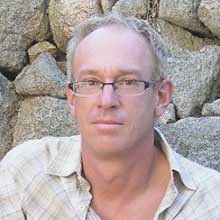
Peter Van Dommelen
Director, Joukowsky Institute for Archaeology and the Ancient World; Joukowsky Family Professor in Archaeology; Professor of Anthropology and Italian Studies
Abstract
Of Figs and Pomegranates: Exploring Subalternity in the Ancient Mediterranean
Ceterum Censeo Carthaginem Esse Delendam is the apocryphal but universally known rejoinder that Cato the Elder, a respected Roman Senator in the mid-second century BCE, relied on to call for the destruction of the North African city of Carthage, despite a formal treaty and the absence of a casus belli. He also brought plump, ripe figs onto the Senate floor to make his case that Carthage represented an existential threat to Rome. He was ultimately successful and Roman legions razed Carthage to the ground in 146 BCE.
This episode is usually interpreted in light of Cato’s words, apocryphal or not, to highlight Roman military might, in the typical conventional fashion of elite histories centered on male political leaders and battlefield achievements, deceitful or otherwise – in my paper, I want to highlight Cato’s figs instead. These fruits and many others besides, not least pomegranates, the malum punicum, stood at the heart of the booming Carthaginian economy, which in turn was built on the hard labor of countless unnamed rural communities, who assiduously cultivated a wide array of crops, including both cereals and tree crops, that fed the growing urban crowds of the ancient world. Overlooked, if not outright dismissed in conventional accounts of the ancient Mediterranean, these rural communities were not only key economic producers, but they also constituted large and culturally distinct social groups with their own traditions and ways of living – not unlike the ‘subaltern classes’ of Antonio Gramsci’s Prison Notebooks and Southern Question.
Drawing on Gramsci’s notion of subalternity and Archaeology’s ability to shine a light on these rural communities, their practices and cultural traditions, it is my intention to discuss the extensive material remains of rural life and agrarian production during the final centuries of the first millennium BCE and to outline an alternative decolonial perspective on the ancient Mediterranean.
Biography
Peter van Dommelen is Director of the Joukowsky Institute for Archaeology and the Ancient World, Joukowsky Family Professor in Archaeology, and Professor of Anthropology and Italian Studies. He is a Mediterranean archaeologist, whose research and teaching revolve around the rural Mediterranean past and present. The regional focus of his work lies in the western Mediterranean, where he carries out long-term fieldwork on the island of Sardinia. He concentrates on later Mediterranean prehistory and the earlier part of Classical Antiquity - roughly the first millennium BCE but comparative studies of ethnographic and recent historical context in the Mediterranean and elsewhere play a crucial role in his research and teaching.
He read Archaeology and Classics at the University of Leiden (the Netherlands), specializing in Theoretical and Classical Archaeology (MA, 1990; PhD, 1998); he also studied Anthropology and Material Culture at UCL (1991). He taught Mediterranean Archaeology at the University of Glasgow between 1997 and 2012, before coming to Brown University. He serves as director of the Joukowsky Institute since 2015. He has held visiting appointments at the Universities of Valencia (Spain, 2005-06), Cagliari (Sardinia, 2011) and the Balearics (Mallorca, 2012).
Dima Srouji
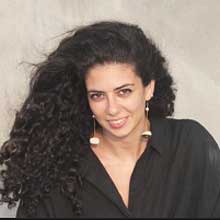
Dima Srouji
Architect and Visual Artist, Researcher Leading the MA City Design Studio a the RCA Royal College of Arts, London
Abstract
Politics of the Underground
The stories of our Palestinian ancestors, embedded underground in archeological strata have been displaced and misrepresented for decades. In Palestine, due to the long history of settler colonialism and the current Israeli occupation, the underground and its past is narrated by those with power, rendering the ground and its artifacts through a narrowed single narrative that serves a single-identity nation-building of the state of Israel. Although biblical archeology gained popularity a century ago, it continues to be a form that allows archeologists and some of their funding institutions to comb through strata in the ways that serve those interested in proving the bible through scientific means. Because of this, archeological sites in Palestine were used as tools for colonization and are still weaponized today towards further occupation and settlement expansion.
The embedded trauma in the ground over a century of subterranean abuse remains. My research and work look at multiple scales, the ground itself as an object of trauma, as well as the artefacts that were extracted from that ground using Palestinian female and child labour. The talk will look at the specific case study of Sebastia, an archeological site in Nablus, in the West Bank. The case study reveals a century of history starting with the Harvard Excavations in 1908 and touches on Israeli and settler violence in the living and breathing Palestinian city today. Further, the talk will look at my own practice as an artist and architect in finding ways to transform that trauma by replicating displaced glass vessels as a form of imaginary restitution, and short films that aim to untangle and make sense of our history.
Biography
Dima Srouji is a Palestinian architect exploring the power of the ground, its strata, and its artefacts in revealing silenced narratives and embedded intergenerational memories. The practice excavates moments of potential imaginary liberation searching for ruptures through the coupled past and present colonization and occupation of Palestine while forging methods for collective becomings. She works with glass, text, archives, maps, plaster casts, and film, understanding each as an evocative object and emotional companion. Her projects are developed closely with archaeologists, anthropologists, sound designers, and glassblowers, as she believes collaboration is integral in the collective process towards liberation. The practice is situated within a decolonization space and functions through critical cartography, deep mapping, and critical analysis methodologies. She is a graduate of the Yale School of Architecture, and in 2016 founded Hollow Forms, a glassblowing project with the Twam family in Jaba’ that aims to reactivate the industry and shed light on the history of glass in the region. She is currently leading the MA City Design studio at the Royal College of Art, London.
Mauro Puddu (Convenor)

Mauro Puddu (Convenor)
Marie Curie Fellow Researcher of Archaeology, Ca' Foscari University Venice
Abstract
The Body of The Archaeologist: Exposing A Long-Overlooked Semiotic Interpretant
Until two years ago, we used to live in an historical period when everything – a book, a massage, or a piping hot pizza – could be delivered to anybody in the space of few days, hours, or even minutes. Nevertheless, the delivery riders’ voices tended to disappear amongst the chaos of lively cities. With the first lockdown imposed by the pandemic, though, in the silence of empty cities and deserted streets, the delivery riders’ voices started to exit the anonymity. Their faces became suddenly familiar to the customers, and accredited by public opinion in the press for allowing the quick movement of essential commodities. As a result of this visibility, their poor work conditions reached the hotspot, and they were acknowledged as essential workers. During the same lockdown though, few other workers’ categories did not stop going physically to their workplace. Amongst them were are archaeologists. In Britain, archaeologists never underwent the lockdown, acquiring de facto the status of essential workers. Nonetheless, working mainly in fenced building sites, their faces stayed blurry and their voices unheard.
In this paper, I use examples from construction/archaeological sites in United Kingdom to debate the meanings of the unknown place in which archaeologists, and specifically their body, still stand in modern society, discussing the semiotic potential of its exposure. To this day, there is no clear idea in modern societies around what an archaeologist at work does and why. Certainly, the sweetened cinematic images of archaeologists with either a little brush or a whip in their hands do not contribute much to the visibility of a body in motion as is the one of the archaeologist at work. As do not the dramatic titles on the news celebrating sensational finds by one individual. But there is more. It is sufficient to scroll down the thousands of images of archaeologists at work on the web to realise that the body of the archaeologist is, when not celebrated for its spectacular find, neutralised. Those images, often released by specialised journals aiming to promote archaeology, spin around tidiness, cleanliness, motionless. Moreover, the digital turn of archaeology that academia has been taking – mostly uncritically – in the last twenty years, contributes to this removal. By exposing the body of the archaeologist as a crucial semiotic element – what American philosopher Charles Sanders Peirce calls interpretant – for a sustainable understanding of the materiality of the past, I will argue here that at the core of the relationship between archaeology and modern society is physical labour, and the stigma it suffers as opposed to intellectual advancement. This semiotic artifice will help me, through abundancy of visual examples, to unveil how a genuine investigation of the real conditions faced daily by the body of the archaeologist contribute to broaden our knowledge of the past in harmony with – rather than detached from – our critical understanding of current society.
Biography
Mauro Puddu is a Marie Skłodowska-Curie Individual Fellow in archaeology at Ca’ Foscari. He is interested in the Mediterranean region during the Roman period and the Late Antiquity, with a specific geographic focus on Sardinia. His research questions, imbued with a systematic theoretical approach that relies on semiotics, postcolonial studies, and critical theory, engage with the traces of ancient practices as fragments of social identities built both in antiquity and, as a reflex, in our times. After obtaining his MA at UCL and PhD at the University of Cambridge, Mauro Puddu aligned to his research activity several years of work on the field as archaeologist in United Kingdom first, and as a director of the archaeological site of Nuraghe Seruci (Gonnesa, Sardinia).
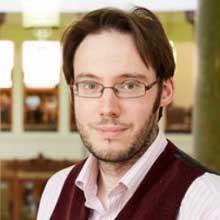
Robert Edmund Upton - discussant
